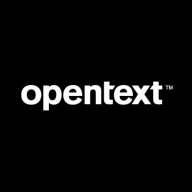

SharePoint and OpenText Documentum compete in the content management category, offering robust solutions. SharePoint is preferred for its integration within Microsoft's ecosystem, including Office 365, whereas OpenText Documentum is noted for strong security, complex workflows, and regulatory compliance in large-scale environments.
Features: SharePoint provides features like alerts, co-authoring, meeting workspaces, and powerful collaborative capabilities. Its integration with Office applications allows seamless work across devices, while its search functionality and version history are particularly valued. OpenText Documentum excels with business process management, lifecycle management, and robust integration options, making it suitable for regulated industries.
Room for Improvement: SharePoint could improve real-time co-authoring, permission setups, and file synchronization with non-Microsoft tools, which currently lacks seamlessness. OpenText Documentum faces user interface challenges, and its cloud readiness needs enhancement. It also requires improvements in ease of use and integration with business apps, along with better AI capabilities to justify its pricing.
Ease of Deployment and Customer Service: SharePoint offers flexible deployment options across cloud and on-premises environments and integrates well within Microsoft's ecosystem, although its customer service could improve, often relying on third-party vendors. OpenText Documentum provides on-premises and hybrid setups with strong customer service and technical support, highlighting its seamless system integration approach.
Pricing and ROI: SharePoint's pricing is aligned with Office 365, making it accessible to organizations of varying sizes, although additional features may increase costs. Its ROI is linked to collaboration efficiency. OpenText Documentum generally has higher costs justified by its document and compliance management capabilities. Pricing varies significantly based on organization scale and licensing.
| Product | Market Share (%) |
|---|---|
| SharePoint | 13.4% |
| OpenText Documentum Content Management | 9.0% |
| Other | 77.6% |

| Company Size | Count |
|---|---|
| Small Business | 10 |
| Midsize Enterprise | 1 |
| Large Enterprise | 28 |
| Company Size | Count |
|---|---|
| Small Business | 80 |
| Midsize Enterprise | 38 |
| Large Enterprise | 81 |
OpenText Documentum Content Management provides centralized document management with strong security, advanced metadata management, and seamless integration with systems like SAP and Salesforce, aiding businesses in overseeing content effectively.
OpenText Documentum Content Management is known for its strong integration capabilities, especially with systems such as SAP, Salesforce, and Oracle E-Business Suite, facilitating effective document management. Its strengths include advanced security features, comprehensive metadata management, and robust support for lifecycle and workflow management. The platform's scalability and business process automation capabilities support industries with large volumes of content. It is adaptable for various sectors, including healthcare, banking, insurance, and government, providing document storage, sharing, and collaboration functionalities. While the intuitive automation engine enhances workflows, users have noted that improvements are needed in UI design, performance, and integration with additional systems. Concerns about cloud transition security, high costs, outdated workflows, and complex metadata management indicate areas for development. Supports are sought for AI integrations, improved cloud functionality, and efficient documentation.
What are the key features of OpenText Documentum Content Management?Industries such as healthcare, banking, and government use OpenText Documentum Content Management for document-centric processes, ensuring regulatory compliance and facilitating collaboration. With Captiva enhancing OCR and batch scanning, it is crucial for managing high-quality documentation and compliance efforts across sectors.
SharePoint is a Microsoft-based platform for building web applications. It covers a widerange of capabilities and while it is appropriate for experienced webdevelopers, even non-technical minded users can easily navigate through thesystem and execute functions such as collaborating data, managing documents andfiles, creating websites, managing social networking solutions, and automatingworkflow.
Major areas that SharePoint deals with are websites,communities, content, search, insights, and composites. The purpose is to give usersthe ability to create or develop these key business components on their owneven without technical knowledge of, for example, how to build a website or howto integrate coding. Configuring SharePoint into a business's system is meantto cut out all of the complicated steps, and pave the way for easierimplementation all around.
We monitor all Enterprise Content Management reviews to prevent fraudulent reviews and keep review quality high. We do not post reviews by company employees or direct competitors. We validate each review for authenticity via cross-reference with LinkedIn, and personal follow-up with the reviewer when necessary.